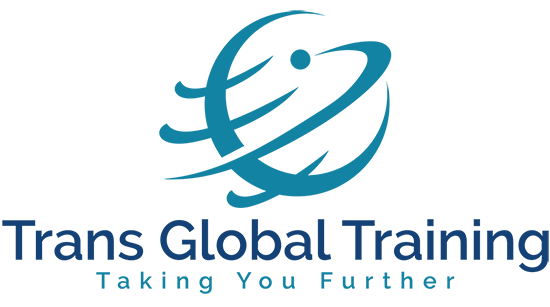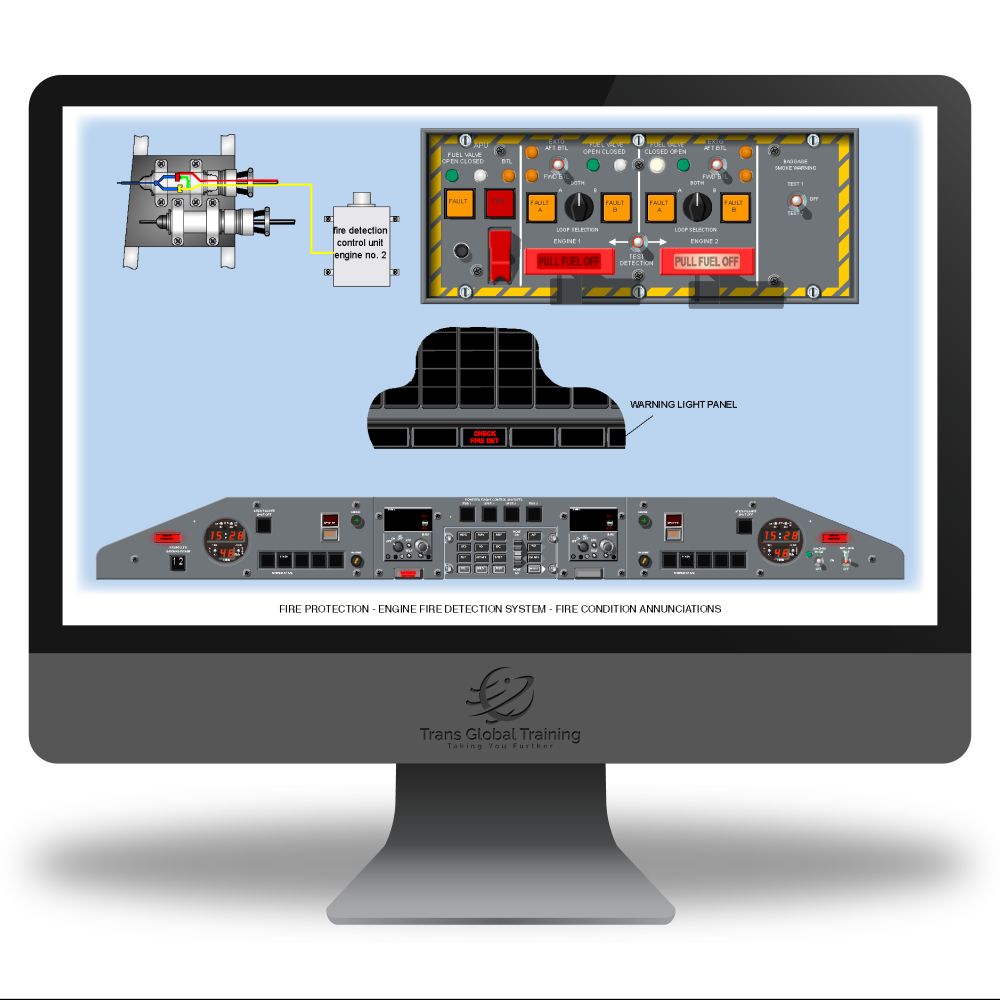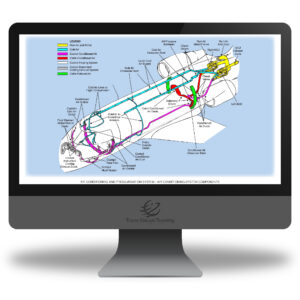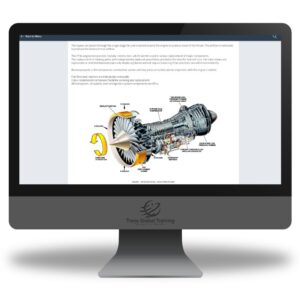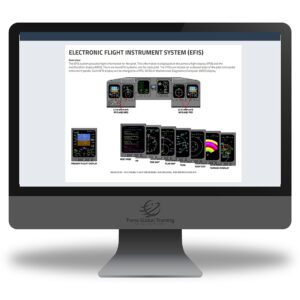
Shop
Dash-8 100/200/300 General Familiarisation
£375.00
Our Courses Scale Perfectly To Any Device
About our Online Self-Study Course
The DASH-8 100/200/300 General Familiarisation with PW120 powerplants course, has been designed to give you a complete technical overview of all aircraft systems. The course covers all mechanical and avionics systems, This self–study online DASH-8 100/200/300 General Familiarisation with PW120 powerplants course, will take approximately 40 hours of study. Students must pass the multi-choice question at the end of each ATA chapter before the next ATA chapter is unlocked. A completion certificate is issued on successful completion of the course.
Our General Familiarisation courses are produced to a minimum of ATA 104 Level 1 and EASA Part 66 Level 1 knowledge levels and course completion time will be approximately 40 hours. This information is stated on the certificate.
You have 12 months from enrollment to begin the course and after starting, 6 months to complete the course. You have a further 90 days to review the course after completion.
Click on the DESCRIPTION below for course syllabus and more details. Please click here to view our sample course.
When checking out, please ensure you use the student’s name. To enroll multiple students in the same course, please make separate transactions or contact us for team discounts.
Description
DASH-8 100/200/300 GENERAL FAMILIARIZATION COURSE WITH PW120 POWERPLANTS
ABOUT
Our DASH-8 100/200/300 General Familiarisation with PW120 powerplants course, meets ATA 104 Specification Level I: General Familiarisation; A brief overview of the airframe, systems and powerplant as outlined in the Systems Description Section of the Aircraft Maintenance Manual.
The DASH-8 100/200/300 General Familiarisation with PW120 powerplants course, also complies with EASA’s knowledge LEVEL 1 definition as contained in Regulation EU No. 1321/2014, Part 66, Appendix III Basic Knowledge Requirements;
A familiarization with the principal elements of the subject, with the objective;
(a) The applicant should be familiar with the basic elements of the subject.
(b) The applicant should be able to give a simple description of the whole subject, using common words and examples.
(c) The applicant should be able to use typical terms.
This self-study online DASH-8 100/200/300 General Familiarisation with PW120 powerplants course, will take approximately 40 hours of study. Students must pass a quiz at the end of each ATA chapter before the following ATA chapter is unlocked. A completion certificate is issued on successful completion of the course.
Course objectives: upon completion of the course, the student will be able to identify safety precautions related to the airframe, it’s systems and powerplant.
Identify maintenance practices important to the airframe, it’s systems and powerplant.
Define the general layout of the aircraft’s major systems.
Define the general layout and characteristics of the powerplant.
Identify special tooling and test equipment used with the aircraft.
SYSTEM REQUIREMENTS
Our courses scale perfectly to PC, Laptop, tablet, android and iPhone. You must have an internet connection to use our courses.
STUDY TIME
Course completion time varies with the individual; however, we estimate approximately 40 hours will be required. You have 6 months to complete the course and can stop and restart at the same position with your progress saved. Once completed you will have a further 90 days to review the course.
SUPPORT
Should you require any assistance during your course, please contact us and we will assist you during normal working hours.
WHY USE OUR GENERAL FAMILIARIZATION COURSES?
Our online DASH-8 100/200/300 General Familiarisation with PW120 powerplants course, provides an excellent solution for training engineers or company support staff, giving the required in-depth aircraft type knowledge with the advantage of distance learning.
WHY BUY FROM US?
Our DASH-8 100/200/300 General Familiarisation with PW120 powerplants course, is designed and produced by EASA and UK CAA B1/B2 Engineers, Type instructors and Part 147 Training Managers. We ensure each course covers all relevant ATA chapters.
DETAILED COURSE SYLLABUS
The DASH-8 100/200/300 General Familiarisation with PW120 powerplants course, begins with an aircraft type introduction, then covers each ATA chapter to approximately Part 66 Level 1;
Aircraft Introduction – Aircraft General, Design And Development, Regional Jet Competition, Variants – Series 100, Variants – Series 200, Variants – Series 300, Aircraft Specifications.
ATA 05 TO 12 General Servicing.
ATA05 – TIME LIMITS – Introduction, “A” Checks, “C” Checks, Detailed Structural Inspections, Major Inspection Frame.
ATA06 DIMENSIONS AND AREAS – Zones, Major Zones, Major Sub-Zones, Specific Zone.
ATA07 JACKING – Jacking Procedure, Jacking Precautions, Wheel Jacking.
ATA08 LEVELLING AND WEIGHING – Levelling, Quick Levelling, Precise Levelling.
ATA09 Aircraft Towing – Towing Precautions, Basic Towing Procedure.
ATA10 PARKING AND MOORING – Basic Precautions and Operations.
ATA12 ROUTINE MAINTENANCE – Access Panels, Fuel Tank Water Drains, Air Data System Pneumatic Pipework Water Removal, Engine Oil Level Servicing – Engine Shutdown Procedure, Oil Level Determination.
ATA 31 INDICATING AND RECORDING SYSTEMS – General Description, Digital Electronic Clocks, Digital Clocks, Flight Data Recording System, Flight Data Acquisition Unit (FDAU), Tri-Axial Accelerometer, Acceleration/Inertia Switch, Flight Data Recorder Ground/Test Panel, Take-Off Configuration Warning, Beta Warning Horn System.
ATA 24 ELECTRICAL POWER SYSTEM – General Description And Operation, 28V DC System Description, 115V AC To 28VDC, 28V DC Ground Power, Additional DC Power Sources, Batteries, Variable Frequency AC Power, Variable Frequency AC Controls And Indicators, 115V Variable Frequency AC External Power, Fixed Frequency AC Power, Fixed Frequency AC Power Control.
ATA 34 NAVIGATION SYSTEMS – System Overview, Nav Systems Interface, Pitot-Static System, Outside Air Temperature, Air Data System, Air Data Instruments, Attitude And Direction Determination, Standby Instruments, Flight Instrument System, Electro-Mechanical Instruments, Weather Radar, Enhanced Ground Proximity Warning, Radio Altimeter, ATC Transponder System, Traffic Alert And Collision Avoidance, VHF Navigation System, Automatic Direction Finder (ADF), Distance Measuring Equipment (DME), Global Positioning System, Flight Management System (FMS).
ATA 22 AUTO FLIGHT SYSTEM – Automatic Flight Control System (AFCS) Introduction, Flight Guidance System, Flight Guidance Controller, Advisory Display Unit, Avionics Standard Communications Bus (ASCB), Autopilot Modes, Automatic Pitch Trim Function (Auto-Trim), Yaw Damper/Turn Co-Ordination (YD), Flight Director (FD).
ATA 23 COMMUNICATION SYSTEMS – System Overview, Antennas, VHF Communications System, Audio Integration System, Communication System Controls, Service Interphone, Passenger Address, Cabin Interphone, Passenger Briefing System, Cockpit Voice Recorder, Static Discharging System.
ATA 33 LIGHTS – Flight Compartment Lighting, Maintenance Lighting, Passenger Compartment, Baggage Compartment, Exterior Lighting, Emergency Lighting System.
ATA 29 HYDRAULIC SYSTEMS – System Overview, Main Systems, Controls And Indicators, Main Components, The Three Hydraulic Systems, Operation.
ATA 32 LANDING GEAR – System Overview, Controls And Indicators, Gear Position Determination, Main Landing Gear, Nose Landing Gear, Main Gear Doors, Nose Gear Doors, Alternate Extension, Wheels And Tyres, Brakes And Anti-Skid, Nosewheel Steering System.
ATA 27 FLIGHT CONTROLS – Introduction, Primary Flying Controls, Secondary Flying Controls, Roll Control, Yaw Control, Pitch Control, Lift Augmentation, Stall Warning.
ATA 52 And 56 STRUCTURES – Overview, Basic Operation.
ATA 25 EQUIPMENT/FURNISHINGS – Flight Compartment, Cargo Compartment, Passenger Compartment, Lavatory Compartment, Emergency Evacuation, Emergency Equipment – Flight Compartment, Emergency Equipment – Passenger Compartment, Emergency Locator Transmitter (ELT).
ATA 35 OXYGEN – Fixed Oxygen for Flight Crew and Passenger Emergency Systems, Portable Oxygen.
ATA 38 WATER & WASTE – Potable Water, Lavatory System.
ATA 28 FUEL SYSTEM – Fuel Storage, Engine Feed, Fuel Quantity Indicating System, Fuel Quantity Manual (Magnetic) Indicators, Fuel Temperature Measurement.
ATA 26 FIRE PROTECTION SYSTEMS – Fire Detection, Smoke Detection, Fire Extinguishing, Fixed Fire Extinguisher Bottles, Portable Fire Extinguisher Bottles, Engine Fire Detection, Engine Fire Extinguishing, Smoke Detection – Lavatory, Smoke Detection – Cargo Compartment, Lavatory Fire Extinguishing.
ATA 36 PNEUMATIC SYSTEM – Distribution System, Controls and Indicators, Engine Bleed Air Supply System, Bleed Air Leak Detection System.
ATA 21 AIR CONDITIONING SYSTEM – System Overview, Air Conditioning Packs, Air Conditioning Controls And Indicators, Air Conditioning Operation, Air Distribution, Recirculation Fans, Avionics Cooling System, Temperature Control, Emergency Ram Air Ventilation, Pressurisation.
ATA 30 ICE AND RAIN PROTECTION – Controls and Indicators, Pneumatic De-Ice System, Propeller Anti-Ice Protection System, Horn Ice Protection, Probe Ice Protection, Windshield and Side Window Heating, Windshield Rain Protection.
ATA 61 PROPELLER – HS 14SF-7 Basic Construction, HP Pump And Associated Valves, Propeller Control Unit (PCU), Over-Speed Governor, Condition Lever, Power Lever, Synchrophasing Pulse Generator, Propeller Synchrophase Control Unit, Feathering Pump, Propeller Speed Sensor (Np), Propeller Brake, Propeller Brake Control Unit, Propeller Pitch Change, Speed and Phase Regulation, Feathering, Reversing, Hotel Mode, Propeller Speed Monitoring, Propeller Hydraulic Control, Propeller Operational, Governing Speed Mode, Synchrophase Mode, Beta Mode, Reverse Mode, Propeller Low Pitch Protection System.
ATA 71 TO 80 POWERPLANT – Nacelle, Air Intakes, Mounts, Fire Seals, Engine Drains, Electrical Harness, Powerplant – Basic Design, Gearboxes, Engine Fuel, Fuel Heater/Filter, Fuel Pump, Hydro Mechanical Unit (HMU), Fuel Transmitter, Flow Divider And Nozzles, Electronic Control Limit (ECU), Fuel Flow/Fuel Used (FF/FU) Indicator, Ignition, Engine Air, Engine Controls, Engine Indicating, Exhaust, Engine Oil, Engine Starting.
